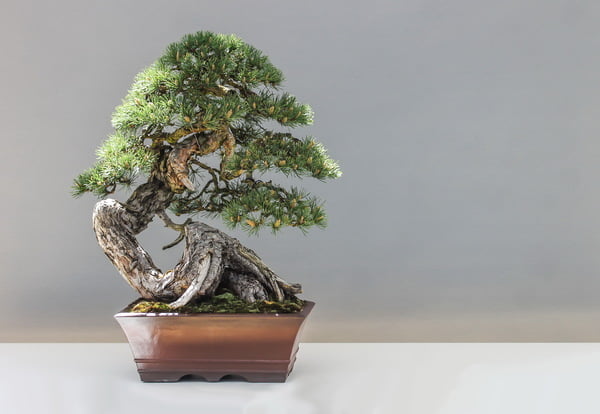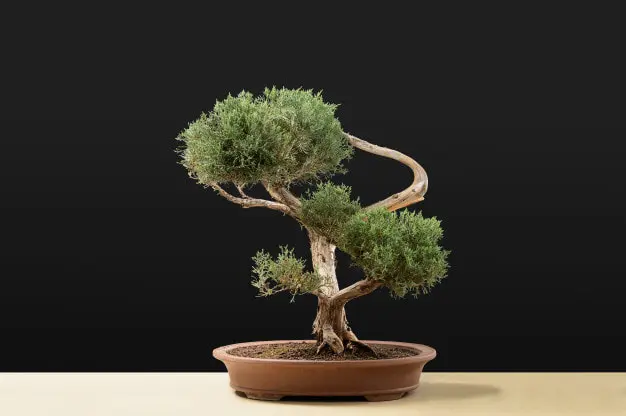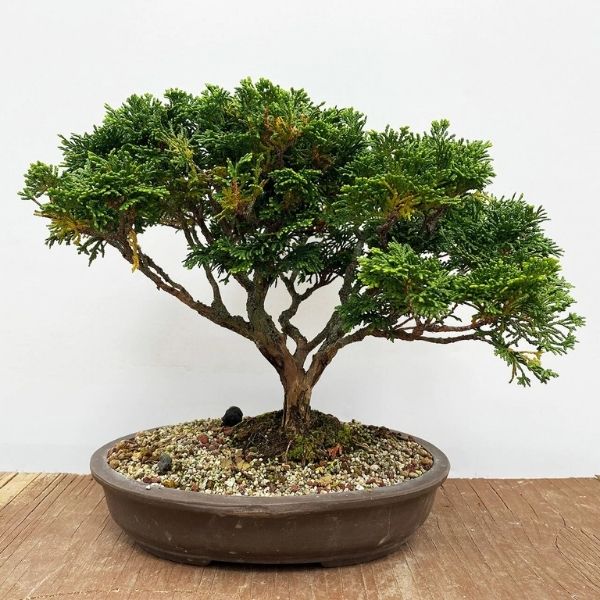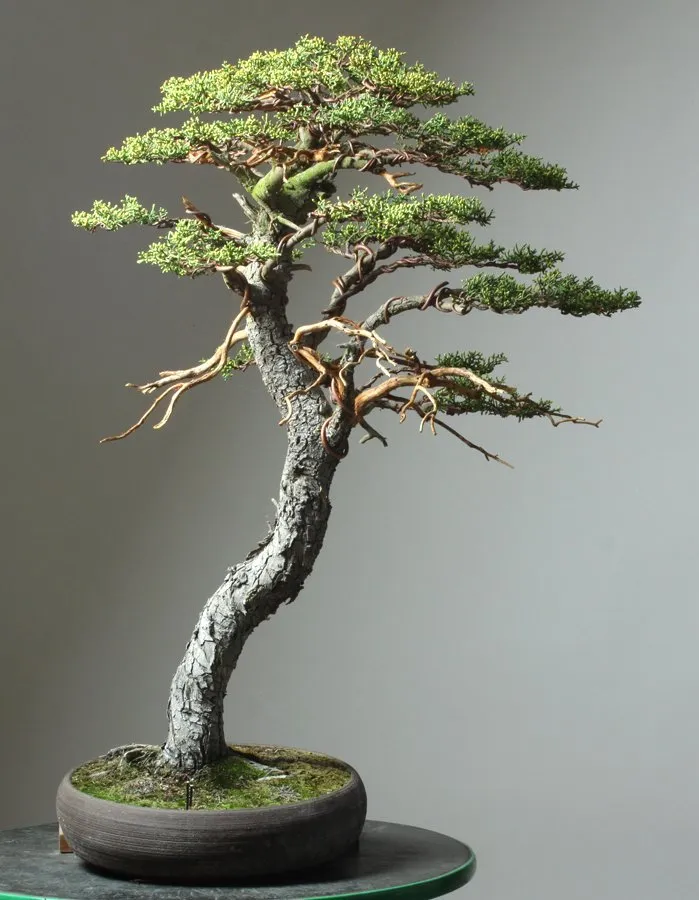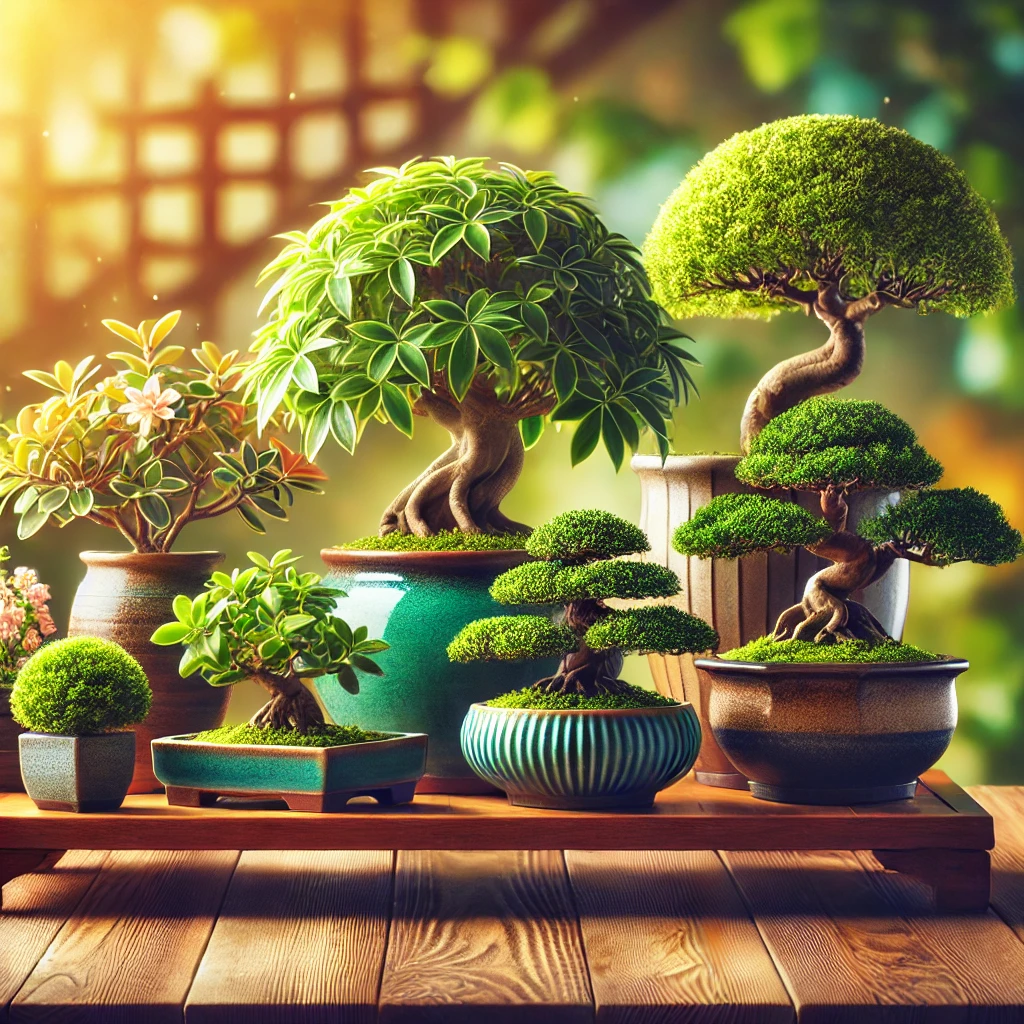For years, the Cypress tree has been used for ornamental values in many regions. But experienced bonsai enthusiasts can exclusively own them, as they are high-maintenance and generally unfitting for bonsai purposes.
The two most common cypress species used for bonsai are the bald cypress and the hinoki cypress. If you are enthusiastic enough to handle them, this guide will help you to take care of cypress bonsai trees.
Cypress Bonsai Quick Facts
| Fact | Description |
|---|---|
| Scientific name | Cupressus, Chamaecyparis, and Taxodium |
| Family | Cupressaceae |
| Native to | the United States and East Asia. |
| Hight | Twenty-five meters or eighty feet. |
| Life spans | Bald cypress can live up to 600-1200 years, and hinoki cypress can live more than 100 years, cypress’s lifespan is depending on the species. |
| Leaves | Evergreen, needle-like leaves. |
| Flower | small and inconspicuous flowers |
| Fruit | Reddish-brown cone |
| Cultivation | Popular as a bonsai tree |
| Symbolism | Everlasting life |
| Uses | Ornamental plants for indoors and landscaping. |
Cypress Bonsai Care Guide
Cypress species like bald cypress or hinoki are perfect to get a basic knowledge of caring techniques and requirements. So, let’s dig into the soil, temperature, water, etc. requirements in detail.
Cypress Bonsai Watering
The Cypress bonsai tree is native to wet and swampy soil. So if you are someone who enjoys watering plants this tree would be ideal. The soil of the cypress bonsai never should be left dry.
When you water your bonsai, start from the top, and sprinkle water like rainfall. Make sure to fill the pot to the rim with water, especially in the summer. During this season, it’s important to water the tree three times a day. Swamping the pot up to the top during summer also helps to spread the roots to grow more freely.
Even though they like water, excessive water will hamper the growth of the tree. Just aim to keep the soil wet.
Learn more about Watering a bonsai tree.
Cypress Bonsai Temperature Tolerance
The cypress trees are sturdy, but it needs protection from cold conditions. They are sensitive to temperatures below 10°F-20°F. For their healthiest state, they prefer a constant climate, especially hot summers. They can still grow in cooler regions, but many owners noticed that in this condition their growth is almost non-existent.
This tree is in its healthiest state when it is kept outdoors the whole year. During winter, it’s necessary to protect the roots, so cover them with leaves and needles. The plant also needs to be protected from strong cold winds. Some people prefer using sheds or cold frames to provide protection from cold winds and the dormant season.
Right Placement for Cypress Bonsai
The cypress bonsai tree is outdoor bonsai that should be placed where it can get full sun exposure during all seasons and especially during growing seasons. They love dry and hot climates for their growth. Usually, bonsai requires cold weather, but it is not the same case for cypress. In fact, they are against icy winds and frosts. You need a protected area where the wind won’t catch them.
Repotting Cypress Bonsai
During spring cypress bonsai trees produce green numbs in their branches and trunks, it’s the ideal and only preferable time to re-pot the plant.
During the early years of a plant’s growth, re-potting can be done in every two to four years, and after ten years of growth re-potting should be done in five years of intervals.
Cypress trees’ root growth system is strong, they grow and get thick really quickly. So, pruning the roots during re-potting will promote root growth.
- Prepare the tools (root rake, scissors, chopsticks, and wire cutter).
- Use a root rake to loosen the soil before taking the tree out of the pot. As cypress trees love water and have almost zero possibility to get root rot, you can also soak the soil for about thirty munites to loosen it.
- Use a chopstick to remove the old soil around the root. You have to be careful with this step in order to not harm the roots.
- Take a bonsai scissor and trim the roots.
- Take a new pot and add a thin layer of heavy grain soil, followed by bonsai soil.
- Place the tree in its new pot, you can add wires to keep it in a certain place.
- Add more soil around the tree and water thoroughly.
Best Soil for Cypress Bonsai
Cypress bonsai trees are picky about their moisture-retaining in the soil and an ideal soil mixture is needed. They require semi-humid soil that is enriched with different minerals. To control the soil from drying out, the moisture content of the soil should be checked frequently.
Heavy soil such as compact mushroom compost is also helpful as the bonsai could depend on the soil to retain and gain moisture from it.
How to Guides for Cypress Bonsai
You can boost the growth of cypress bonsai trees by wiring, pruning, fertilizing, and propagating them adequately. So, let’s see how it can be accomplished in detail.
How to Prune Cypress Bonsai
Unlike other bonsai plants, cypress trees needed to be trimmed regularly. They grow rapidly and if it is left without pruning, they can face major challenges, like growth in one direction.
It’s best to prune cypress trees during spring and early summer in order to get better growth next year. However, I usually suggest letting the new growth fully elongate and then performing the first round of pruning in early June. Then it should be left alone till the late summer when the second flush of growth occurs and at this point, it is ready to be pruned again.
Pruning can be done through three methods- pinching, scissors, and a combination of both. You must decide according to your preference. Scissor pruning will give a natural-looking appearance, pinching will give a palm-palm-like appearance, and the combination will give the best of both.
How to Wire a Cypress Bonsai
Wiring and Styling of a cypress bonsai tree can be possible but with heavy caution. Its trunk and branches are extremely tender and grow rapidly so it can get damaged easily. Species like hinoki Cypress bonsai trees look better when the branches are arranged at sharp and downward angles. Wiring can be done at any season of the year, but if you are planning for a drastic bend, choose fall.
Follow the steps to wire your cypress tree:
- Take aluminum or copper wire. The thickness should be one-third of the branch’s diameter.
- Stick the wire in the soil near the base of the trunk and start wrapping it upwards in a spiral formation while keeping a 45 degrees angle.
- Ensure the wire is not too loose or tight.
- After winding, bend the tree gently to your desired shape. Few leaves can fall in the process. but it’s normal.
- After a few months, the tree will mold into the shape, and the wire will be ready to take out.
Learn more about How to Wire a Bonsai Tree Branch
How to Fertilize Cypress Bonsai
In the growing season, feeding must be done once a week. As the season approaches the end gradually gradually decrease the frequency to once every fourteen days or twice a month. Stop providing fertilizer in the early winter days, to ensure the tree goes dormant on time.
Feeding cypress is relatively easier than others. You can use any acidic fertilizer in liquid or its usual form. I prefer to feed them Mir-Acid. Wait for at least six weeks after re-potting to fertilize them.
Check this detailed guide on How to Fertilize your Bonsai Trees the Correct Way
How to Grow a Cypress Bonsai
Growing cypress trees from seeds or cutting can be rewarding and fun. Both methods have their ups and downs but both will produce beautiful trees if you follow the steps properly;
How to Grow Cypress Bonsai from Seed
- Take a pot that can fit 4-5 seeds at once and put some watery or loamy soil. You can use a disposable container in this state, as you will transfer them to a new pot after they start to sprout.
- Do not push the seeds into the soil, you just need to sprinkle them on the top of the soil and cover it with a newspaper. place the container near the window where it will receive plenty of sunlight. Keep the soil moist.
- Seeds can’t tolerate dry soil, especially when they are germinating they require more water. But keeping moist doesn’t mean flooding it, just ensure the top half of the plant is above the water line.
- It will take around one to three months for the seeds to germinate. After they pass the germination state they are ready to move into their permanent home. Use the same kind of soil while re-potting to avoid socking the tree.
Check this detailed guide on How to grow a bonsai tree from seed?
How to Grow Cypress Bonsai from Cuttings
One of the best ways to propagate cypress bonsai trees is through a technique called air layering. This is particularly effective for bald cypress. To do this;
- Choose a branch from the mother plant and cut a strip on the bark.
- Next, take a small bag and load it up with peat and sphagnum and envelop it around the cut.
- Keep it moist for a month or two and once it develops enough root strings to survive on its own, cut it below the rootball and plant it in your new container.
- Keep the same soil mixture around the roots to avoid shocking the plant.
Perform the propagation process in spring to increase the success rate.
Common Cypress Bonsai Problems and Solutions / Diseases & Pests
Fortunately, pests and diseases are not fond of cypress bonsai trees. Providing the right kind of circumstances will cure any common issues. Still most common issues they face are;
Cypress canker
This is responsible for a fungus, Seridium Cardinale. Wild cypresses have been affected by it since World War II. The disease is mainly transmitted by insects. They carried it into the bark and introduce fungus. High humidity during rainy seasons is another cause of the infection.
The symptoms include dry barks, falling leaves, reddish-brown resin oozing from the barks, etc.
Solution:
In most cases, snipping and disposing of the infected area along with a disinfectant dressing works.
Cypress aphids
This kind of pest sucks the sap of the plant and causes a bunch of branches to dry out prematurely. They also can be the career of other diseases.
Solution:
A less aggressive treatment is putting tobacco leaves in water for a couple of days and spraying them all over the tree. Tabacco leaves have natural insecticidal properties and can eliminate pests. If this doesn’t work, go for chemical insecticides.
Cypress Bonsai Images
